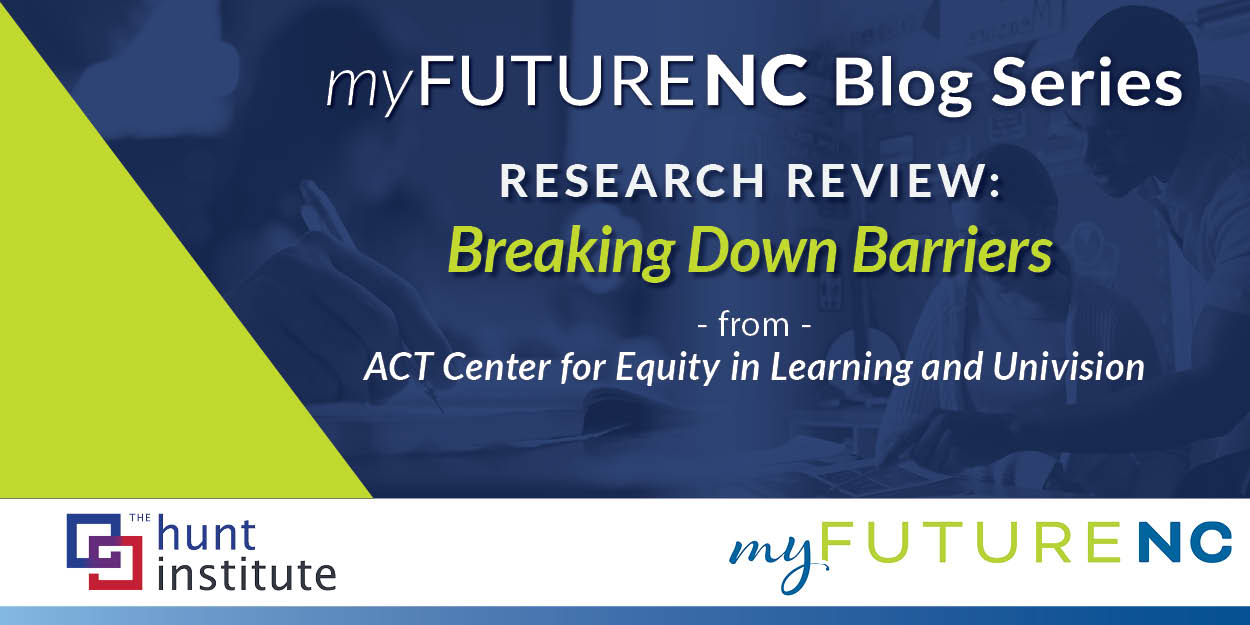

January 22, 2020

By: Kyle Canuette, Associate Policy Analyst, The Hunt Institute
As part of the myFutureNC blog series, we periodically share research on attainment to make connections between national work and our efforts here in North Carolina. In North Carolina, 27 percent of Hispanic adults have completed a postsecondary degree or credential. The ACT Center for Equity in Learning recently partnered with Univision to identify ways to support Hispanic students achieve postsecondary success.
While states across the nation are confronting postsecondary attainment gaps, many are doing so with an intentional focus on tackling equity gaps that persist for students of color. Among the various groups of students that deserve an additional focus, Hispanic students face numerous barriers to navigating the college process.
In North Carolina, myFutureNC has taken equity gaps into consideration throughout their statewide efforts to increase educational attainment. A recent study of North Carolina’s education pipeline revealed large gaps in postsecondary preparation, intent, and attainment between Hispanic students and their white counterparts. Among working age adults, 27 percent of Hispanic adults held a postsecondary degree while 53 percent of white working-age adults held a postsecondary degree. This leaky pipeline begins in high school as 9 percent of Hispanic students met the ACT’s college readiness benchmarks compared to 27 percent of white students, and 76 percent of Hispanic high school graduates reported an intent to enroll in a postsecondary degree program compared to 85 percent of white graduates.
The ACT Center for Equity in Learning and Univision partnered to investigate these challenges in their recent report titled Breaking down Barriers: Understanding Hispanic High School Students’ Perceptions on the Transition to College. Through a series of nationwide focus groups, researchers were able to identify the perceptions of, and barriers to, postsecondary participation among Hispanic students and their parents, finding that:
To overcome these challenges, the report provided the following recommendations:
In North Carolina, myFutureNC is taking a close look at the equity gaps in state postsecondary attainment and the recommendations made in this report are informative as we work to identify ways to close the equity gap for Hispanic students. Organizations like UNC Chapel Hill’s Scholar’s Latinx Initiative (NC SLI) and North Carolina Society of Hispanic Professionals are already engaging with Hispanic students and families North Carolina. Intentionally supporting the college transition for North Carolina’s Hispanic students is critical as we work to lift up our diverse communities and, in turn, ensure that we have a workforce that is prepared to meet the needs of our state.
Author

Kyle Canuette, Associate Policy Analyst
The Hunt Institute